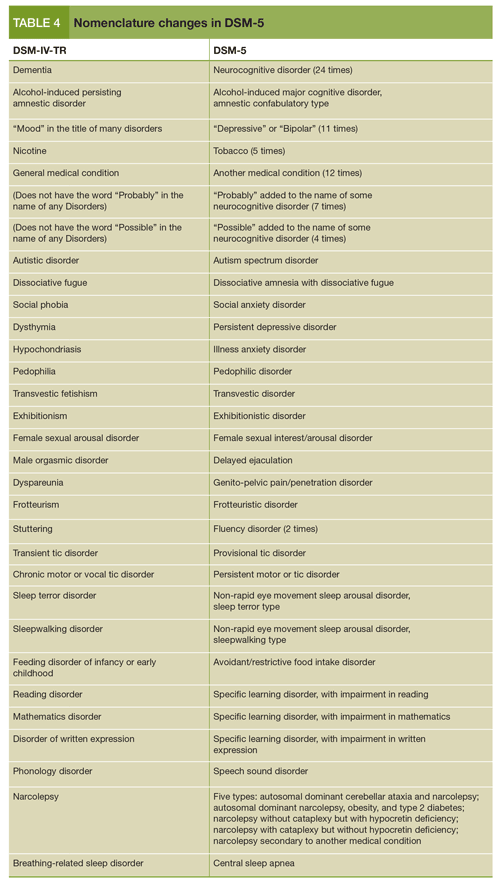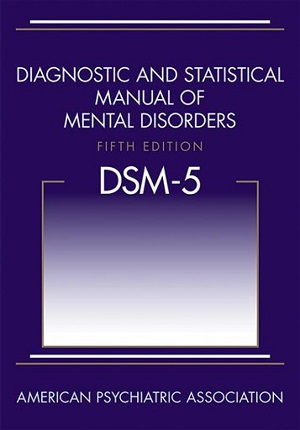To capture individual variation alongside an ASD diagnosis DSM-5 provides core symptom domain severity levels based on the level of support needed for. Which of the 4 Ds of abnormal behavior best describes this behavior.

Dsm 5 What It Will Mean To Your Practice
Aims of the study.

. A polythetic approach was retained for the repetitive and restrictive. To make a mental disorder diagnosis. V refers to a clients _____.
DSM-5s Integrated Approach. To present information on planned changes to the DSM diagnostic assessment strategies that incorporate patient-reported data. Groups will welcome a common language to deal with the neurocognitive disorders.
The priority was to ensure the best care of patients. In DSM-5 the symptoms in the category of restrictive repetitive patterns of behaviors interests or activities Criterion B associated with autism spectrum disorder demonstrated by this patient include stereotyped or repetitive motor movements use of objects or speech. 27 However aspects of the new manuals treatment of.
Which of the following was not a major change to the DSM-5. DSM-5 took a radically different approach drawing upon research that examined how disorders actually cluster together. 37 Full PDFs related to this paper.
In contrast to the diagnoses of abuse and dependence in the DSM-IV the DSM-5 has adopted a dimensional approach 18 in which OUD is now diagnosed along a. A short summary of this paper. The upcoming fifth edition of the Diagnostic and Statistical Manual of Mental Disorders DSM-5 in-troduces an integration of a dimensional approach to diagnosis and classification with the current categorical approach.
Up to 10 cash back The DSM-5 ASD criteria were described broadly to encompass a range of symptom presentations across age and developmental level. These activities include critical reviews of past research reviews of assessment instruments development of. The DSM-5 manual is divided into three major sections.
In this section the new framework is examined and potential benefits and costs discussed. Activities of the DSM-5 work groups and study groups related to patient-reported assessments are summarized. Level 0 to some Level 1 moderate Level 2 severe Level 3 and extreme Level 4.
In the United States the DSM serves as the principal authority for psychiatric diagnoses. The DSM - 5 is only for mental disorders whereas the ICD - 9 - CM also includes conditions related to other parts of the body. Journal of Anxiety Disorders 2015.
Beyond the initial categorical diagnosis ASDnon-ASD further indicators of functioning such as language and cognitive levels adaptive behavior and co-occurring symptoms and features also must be. Full PDF Package Download Full PDF Package. DSM-5 Self-Exam Questions Test Questions for the Diagnostic Criteria.
Download Full PDF Package. Both the DSM - 5 and the ICD - 9 - CM provide ways of classifying disorders. An alternative approach to assessing Social Anxiety Disorder.
Quantifies features of a given disorder to generate a novel dimensional measure. Overall the authors emphasize that HiTOP adheres to the most up-to-date scientific evidence rather than relying largely on decisions by committee the approach used to construct the DSM-5. Which edition of the DSM was the first to assume a theory-neutral approach to psychiatric classification and diagnosis.
Despite widespread use and its adoption by certain insurance and governmental agencies the multiaxial system in DSM-IV was not required. The DSM-5 1 approach to TBI is described in detail in a prior publication by Wortzel and Arciniegas. To Diagnosis and Classifications.
Intrusion criteria B avoidance criteria C negative alterations in cognitions and mood criteria D and alterations in arousal and reactivity criteria E 9. Schizophrenia includes symptoms such as delusions hallucinations disorganized speech and behavior and other symptoms that cause social or occupational dysfunction. A Removal fo the.
Section I provides an introduction a discussion of key concepts. This approach defines a gradient of psychopathology within each category. DSM-5 has moved to a nonaxial documentation of diagnosis.
But briefly the DSM-5 was constructed with the goal of addressing limitations in the DSM-IV while integrating the latest scientific and clinical evidence on the empirical basis of psychiatric disorders. The Diagnostic and Statistical Manual of Mental Disorders Fifth Edition is the 2013 update to the Diagnostic and Statistical Manual of Mental Disorders the taxonomic and diagnostic tool published by the American Psychiatric Association. Treatment recommendations as well as payment.
As the use of these criteria. Another factor contributing to the decreased combinations of symptoms is the move back to a monothetic approach for the social communication domain where instead of two out of four criteria and one out of four criteria required in the DSM-IV three out of three criteria are required in the DSM-5. The new model for personality disorders was presented to the entire DSM-5 Task Force consisting of the overall chair and co-chair of the DSM-5 effort along with the chairs of all of the DSM-5 Work Groups and it was strongly and unanimously approved.
DSM-5 and ICD-11 World Health Organization 2018 both utilize ASD as the unitary classification of core symptoms though the systems differ in their approaches to describing within-group differences. DSM 5 schizophrenia belongs to a category in the Diagnostic and Statistical Manual of Mental Disorders. Tap card to see definition.
775-778 uses the elements of self functioning identity and self-direction and interpersonal functioning empathy and intimacy to differentiate five levels of impairment ranging from little or no impairment ie healthy adaptive functioning. Insistence on sameness inflexible adherence to routines or ritualized patterns of verbal or nonverbal. Trauma and Stress Related Disorders 9 and proposes a new four-cluster model for PTSD 22.
Level of overall functioning. The LPFS see Table 2 DSM-5 pp. 1 Full PDF related to this paper.
The spectrum approach enhances the precision of categorical diagnoses by employing a wider band-width assessment of the array of clinical features associated with DSM. DSM-5 includes PTSD among other similar disorders reactive attachment disorder adaptation disorder etc in a new chapter. The DSM - 5 describes the disorder and provides criteria and definitions to help determine a diagnosis.
A short summary of this paper. Includes a broad array of features. _____ a new disorder in DSM-5 is described by some as frequent temper tantrums in children from 6 to 18 years of age Disruptive mood dysregulation disorder Compared to the definition of generalized anxiety disorder in DSM-5 2013 the definition of anxiety neurosis in DSM-II 1968.
The DSM5 approach builds on the expectation that clinicians and research. The DSM 5 schizophrenia criteria changed with the latest version of the DSM. Details of the research development and the review and approval process for DSM-5 are described elsewhere 11114.


0 Comments